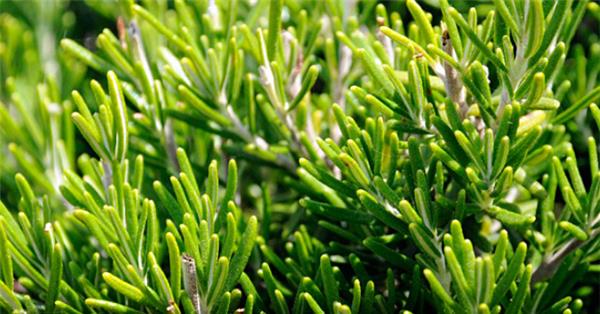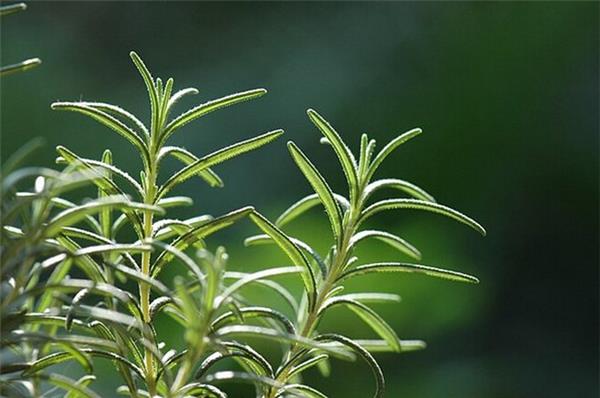Step-by-step analysis of rosemary planting method
Rosemary likes warm climate, but it grows slowly during the high temperature period in Taiwan, and the temperature without cold spell in winter is more suitable for its growth. in terms of water supply, the leaves of rosemary are leathery and can tolerate drought. therefore, the cultivated soil is rich in sand to enable good drainage is more conducive to growth and development, it is worth noting that the slow growth of rosemary, which also means that its regeneration ability is not strong. Special care must be taken when pruning and harvesting, especially the Lignification of old branches is very fast. Too much strong cutting often causes plants to no longer sprout, and it is safer not to cut more than half of the length of branches each time. So what is the planting method of rosemary?

Planting method of Rosemary
☆ propagation: suitable breeding methods for rosemary include sowing, cutting, striping and so on. Rosemary seeds germinate slowly and have a low germination rate, so they are usually used only when introducing new varieties. Asexual reproduction is often used in large-scale cultivation of conventional varieties. In small-scale production, excellent plants growing from 30 to 40 meters can be directly used as mother plants, and a large number of lateral branches can be used to collect cuttings by coring to promote the germination of mother plants. the buds of 3 to 5 meters and the unlignified shoots of 7 to 10 meters on the mother plant can be used as cuttings.
☆ cuttings: cut off the basal leaves after harvest and put them in a container filled with clean water. In mass production, it usually takes a lot of effort to get your own cuttings, and the economical way is to buy rootless cuttings directly from high-quality seedling merchants.
☆ intercalation: the matrix can be perlite, peat soil, loess, coarse river sand, etc., or mixed matrix. In order to accelerate rooting, rooting promoters such as indole acetic acid or naphthylacetic acid can be used. During the rooting period, the suitable temperature in the greenhouse is 22 ℃, and the cuttings should be sprayed frequently, but too much moisture will cause the top of the cuttings to rot and the roots produced are not strong enough. In the first 10 to 14 days, cuttings begin to take root, and special attention should be paid to preventing cuttings from wilting.
☆ transplanting: transplanting cuttings after rooting. It is generally transplanted to a flowerpot with a diameter of 10 meters and planted in a pot of 10 meters for 6 to 10 weeks, depending on the variety and season. During this period, pruning in time to better grow lateral branches, each pruning should not exceed half of the branch length.

☆ fertilizer: generally use 14-4-14, the concentration of 125ppm is suitable. During this period, the matrix pH value is kept at 5.8 to 6.2. if you are worried about the change of pH, nitrate nitrogen can be used instead of ammonium nitrogen in winter. At ordinary times, the use of chelated iron can help to maintain the suitable pH value of the matrix.
☆ watering is the most critical technique in the process of growing rosemary. The basic principle is: if you are not sure whether it should be watered today, water it tomorrow. That is, rosemary is afraid of being wet and not afraid of drying.
☆ pest management: in humid environment, root rot and gray mold are common diseases of rosemary. If the rosemary plant wilts while the substrate is still wet, the plant needs to be removed from the greenhouse immediately. The most common pests are red leaf mites and white whitefly. At present, the most ideal method is to use biological control. No matter what kind of diseases and insect pests, focus on prevention, can start from the sanitary condition, appropriate water management, reasonable temperature and light, and need frequent observation and timely elimination of weak plants.
Rosemary leaves with tea aroma, taste spicy, slightly bitter, often used in cooking, can also be used to make herbal tea. Evergreen shrubs, in ancient times, it was believed that rosemary could enhance memory. at present, it is recognized that the most antioxidant components in rosemary are sage acid, sage phenol, rosmarinol, ursolic acid, rosmarinic acid and so on. So, what are the effects and effects of rosemary?

The efficacy and function of rosemary:
☆ 1. Rosemary flowers and seeds can relieve headaches, help sleep and prevent hair loss. At the same time, it also has a certain effect of sterilization and anti-pain and poison; adding a few leaves when cooking can remove the smell of fish; fresh grass can make tea, bathe, sweat and refresh; flowers can be distilled to produce aromatic oil. The world's first perfume-Hungarian water is extracted with rosemary.
☆ 2. Rosemary can eliminate flatulence, enhance memory, refresh and annoy, relieve headache symptoms and improve hair loss (not suitable for pregnant women). Rosemary tea has a sobering aroma, can enhance brain function, can improve headache, increase memory, for students who need a lot of memory might as well drink more rosemary tea, in addition to cold, abdominal distension, obesity and so on.
☆ 3, Rosemary can improve language, vision and hearing disorders, enhance attention, treat rheumatism, strengthen liver function, reduce blood sugar, contribute to the treatment of arteriosclerosis and restore vitality of paralyzed limbs.
☆ 4, Rosemary has a strong astringent effect, can help us clean hair follicles and skin deep, and can make pores smaller, so that the skin looks finer and smoother.

☆ 5. Rosemary can effectively promote scalp blood circulation, improve hair loss and reduce the occurrence of dandruff.
Rosemary has high edible and medicinal value. In western food, rosemary can be used as spice to add flavor to dishes. Rosemary has a refreshing effect, and it also has a therapeutic effect on indigestion and stomachache. Rosemary can promote blood circulation and relieve headaches. So, how should rosemary be preserved?
The secret of preservation of rosemary
Rosemary should be kept in a ventilated and dry place, avoid sunlight as far as possible, and should not be placed together with objects with a strong smell.
☆ rosemary avoid dampness: Rosemary has a strong moisture absorption and moisture. When storing, the relative humidity should be 60%.
☆ rosemary bogey high temperature: the best storage temperature of rosemary is 0 Mel 5 ℃.
☆ rosemary bogey odor: Rosemary contains high molecular weight palmitic enzymes and terpenoids. The biological active wave of this kind of substance is extremely unstable and can absorb peculiar smell widely.


The above is the introduction of the planting methods and functions of rosemary summarized by the editor, hoping to help you better understand rosemary and better plant rosemary.
It can help us clean the hair follicles and the deep layers of the skin, and make the pores smaller, thus making the skin look finer and smoother.

☆ 5. Rosemary can effectively promote scalp blood circulation, improve hair loss and reduce the occurrence of dandruff.
Rosemary has high edible and medicinal value. In western food, rosemary can be used as spice to add flavor to dishes. Rosemary has a refreshing effect, and it also has a therapeutic effect on indigestion and stomachache. Rosemary can promote blood circulation and relieve headaches. So, how should rosemary be preserved?
The secret of preservation of rosemary
Rosemary should be kept in a ventilated and dry place, avoid sunlight as far as possible, and should not be placed together with objects with a strong smell.
☆ rosemary avoid dampness: Rosemary has a strong moisture absorption and moisture. When storing, the relative humidity should be 60%.
☆ rosemary bogey high temperature: the best storage temperature of rosemary is 0 Mel 5 ℃.
☆ rosemary bogey odor: Rosemary contains high molecular weight palmitic enzymes and terpenoids. The biological active wave of this kind of substance is extremely unstable and can absorb peculiar smell widely.


The above is the introduction of the planting methods and functions of rosemary summarized by the editor, hoping to help you better understand rosemary and better plant rosemary.
- Prev

Is the flower of Datura mandala poisonous? what should we do after poisoning?
Is the flower of Datura mandala poisonous? what should we do after poisoning?
- Next

What is the implication of how to raise flowers in potted carnations?
What is the implication of how to raise flowers in potted carnations?
Related
- Wuhan Hospital Iron Tree Blooming Result Was Instantly Frightened by the Gardener Master
- Which variety of camellia is the most fragrant and best? Which one do you like best?
- What is the small blue coat, the breeding methods and matters needing attention of the succulent plant
- Dormancy time and maintenance management of succulent plants during dormancy
- Minas succulent how to raise, Minas succulent plant pictures
- What are the varieties of winter succulent plants
- How to raise succulent plants in twelve rolls? let's take a look at some experience of breeding twelve rolls.
- Attention should be paid to water control for succulent plants during dormant period (winter and summer)
- Watering experience of twelve rolls of succulent plants
- Techniques for fertilizing succulent plants. An article will let you know how to fertilize succulent plants.

